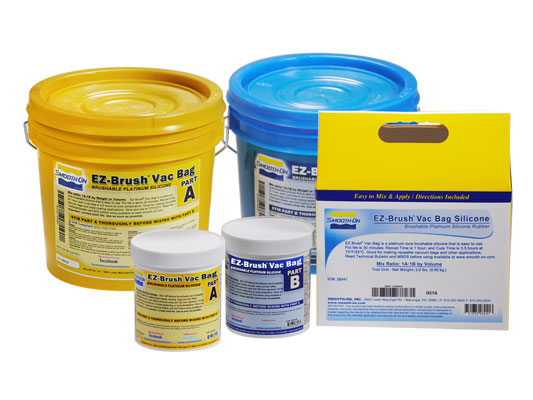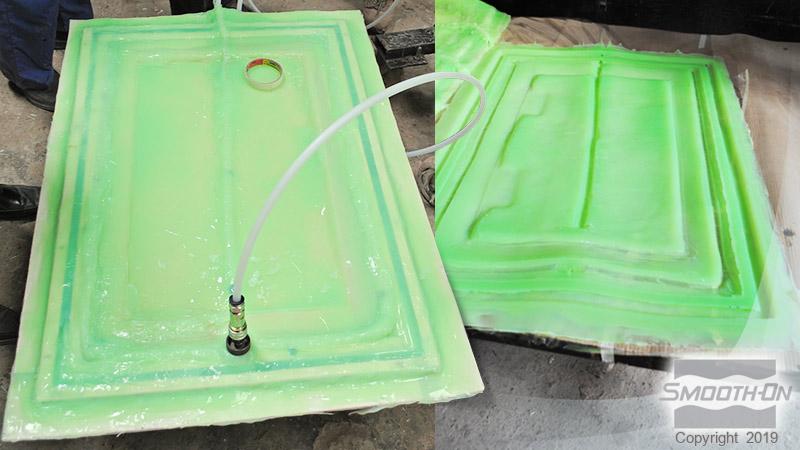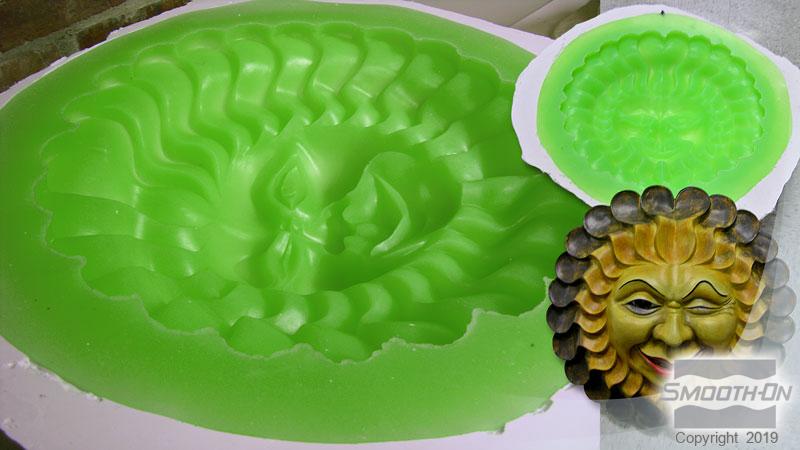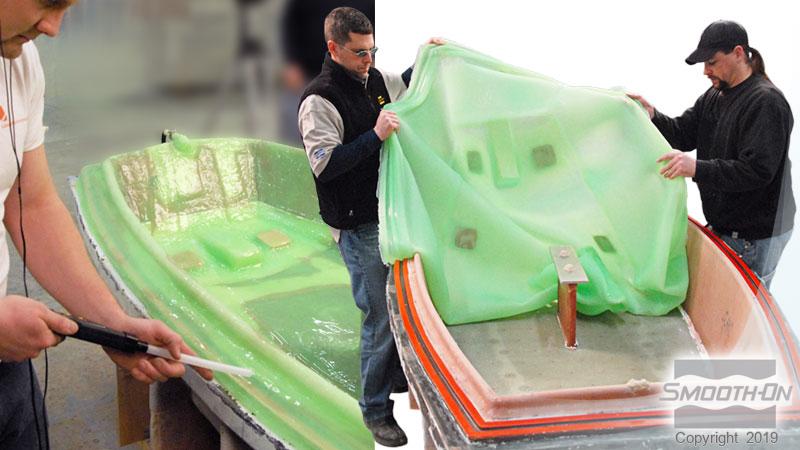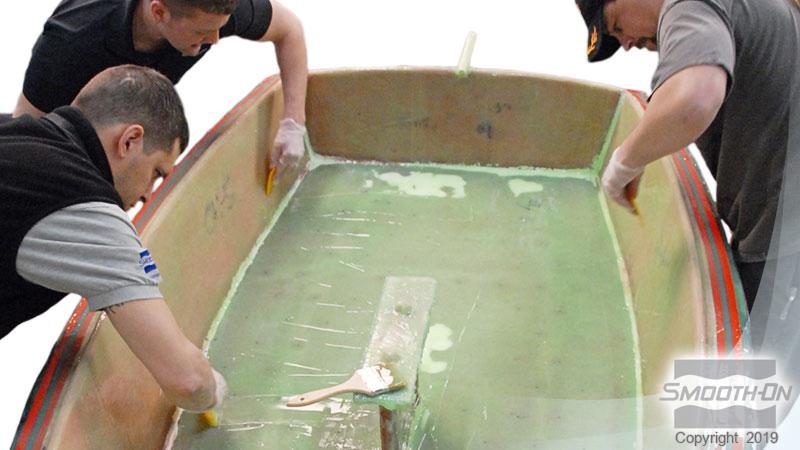EZ-Brush™ Vac Bag Silicone
EZ-Brush™ Vac Bag Silicone is a brushable platinum cure silicone developed especially for making high performance, reusable vacuum bags. EZ-Brush™ Vac Bag Silicone is easy to mix and apply. Mix ratio is 1A:1B by volume and rubber can be applied with a brush or spatula to vertical surfaces without sagging.
Features
Pot life is 30 minutes, recoat time is 1 hour. Rubber cures with negligible shrinkage to a soft, flexible rubber (Shore 20A) with very high elongation and tear strength. Newly made bags can be removed from the tool in 3.5 hours and used immediately in production with polyester or epoxy resin systems and will withstand temperatures up to 500° F /260° C.
Compared to conventional vacuum bagging systems, EZ-Brush™ Vac Bag Silicone is much faster at delivering a productionready silicone bag resulting in a tremendous time and labor savings. Since bags are re-usable, long term material costs are greatly reduced.
Instructions
Preparation - Materials should be stored and used at room temperature (73° F / 23° C). Warm temperatures will reduce the working time of this material. This product has a limited shelf life and should be used as soon as possible. Work environment and tool to be sprayed should also be at room temperature. Wear safety glasses, long sleeves and rubber gloves to minimize contamination risk. Model surface should also be at room temperature.
Because no two applications are quite the same, a small test application to determine suitability for your project is recommended if performance is in question.
Cure Inhibition - Platinum silicones are especially susceptible to cure inhibition by a variety of contaminants (such as sulfur and uncured epoxy resin) resulting in tackiness at the pattern interface or a total lack of cure. If compatibility between the rubber and the surface is a concern, a small-scale test is recommended. Apply a small amount of rubber onto a non-critical area of the pattern. Inhibition has occurred if the rubber is gummy or uncured after the recommended cure time has passed.
To prevent inhibition, a “barrier coat” of clear acrylic lacquer sprayed directly onto the pattern is usually effective. Allow to thoroughly dry.
Note: Even with a sealer, platinum silicones will not work with modeling clays containing heavy amounts of sulfur. Do a small scale test for compatibility before using on your project.
If there is any question about the effectiveness of a sealer/release agent combination, a small-scale test should be made on an identical surface for trial.
Safety - Use in a properly ventilated area. Wear safety glasses, long sleeves and rubber gloves to minimize contamination risk. Wear vinyl gloves only. Latex gloves will inhibit the cure of the rubber.
MEASURING & MIXING - Before you begin, pre-mix Part B thoroughly. After dispensing required amounts of Parts A and B into mixing container (1A:1B by volume or weight), mix thoroughly by hand or turbine mixer (available at your local Smooth-On distributor). Material should be mixed for 2-3 minutes making sure that you scrape the sides and bottom of the mixing container several times. After mixing parts A and B, vacuum degassing is recommended to eliminate any entrapped air. Vacuum material for 2-3 minutes (29 inches of mercury), making sure that you leave enough room in container for product volume expansion.
Coverage Rate: Vacuum Bagging – At 3/16” (4.8 mm), the material will cover 137.1 sq. in/lb of material (0.2 sq. m/kg)
- One gallon unit (16 lbs. / 7.26 kg) will cover a 15.2 square foot (1.41 sq. meters) area at a thickness of 3/16” (4.8 mm).
- One 5 gallon unit (80 lbs. / 36.29 kg) will cover a 76.2 square foot (7.05 sq. meters) area at a thickness of 3/16” (4.8 mm).
Applying The Rubber - This product must be applied in layers. 3 to 4 very thin layers (approximately 0.06” / 1.5mm per layer) are adequate to build a minimum final thickness of 3/16” (4.8 mm). Start at one end of tool and apply a thin, uniform layer across all surfaces. Let the first coat cure for 1 hour at room temperature or when it becomes “tacky” before adding the next coat. Repeat until the necessary thickness is achieved. Go back to original starting point and apply 2nd layer to entire tool. Repeat until a minimum 3/16” (4.8 mm) thickness is attained.
Apply material to undercuts and recesses first. Have an extra pair of hands to brush rubber as it is applied. Do not allow rubber to fully cure between layers, as delaminating may result.
Curing - Allow the rubber to cure for at least 3.5 hours at room temperature (73° F/23° C) before demolding. Do not cure rubber where temperature is less than 65° F /18° C.
Performance & Storage - Fully cured bags are tough, durable and will perform if properly used and stored. The physical life of the bags depends on how you use it (materials cast, frequency, etc.). Using a release agent may be necessary in some cases. Contact Smooth-On to discuss your particular application. Before storing, the bag should be cleaned with a mild solvent, such as isopropyl alcohol, and wiped fully dry. Bags should be stored on the tool whenever possible. Store bags on a level surface in a cool, dry environment. Do not stack bags; expose them to moisture or UV light.
Related Categories: Silicone Rubber - Platinum Cure
Related Series: EZ-Brush™ Vac Bag Silicone – Brushable Platinum Silicone Rubber
How-To Articles
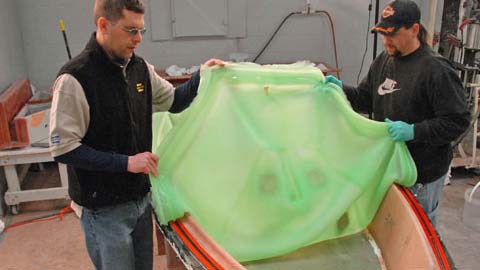
How To Make a EZ~Brush™ Silicone Reusable Vacuum Bagging Demo
EZ~Brush® Vac Bag Silicone Rubber Offers Several Advantages Over Conventional Vacuum Bagging Materials
